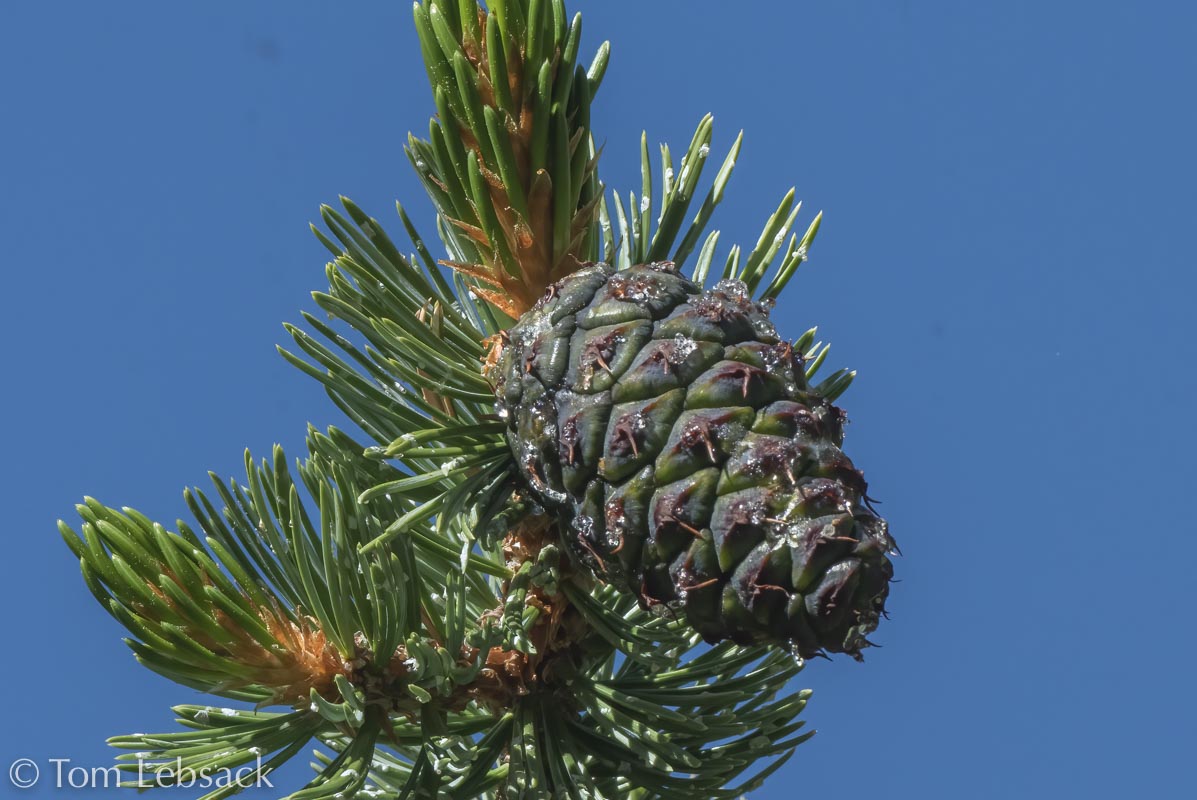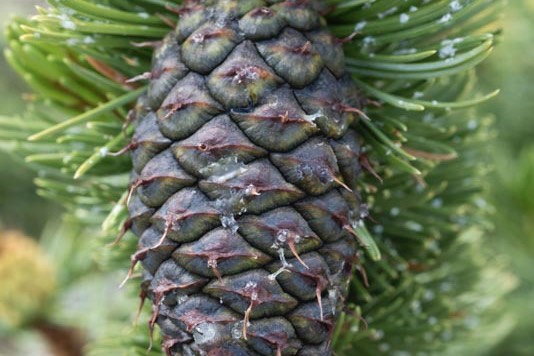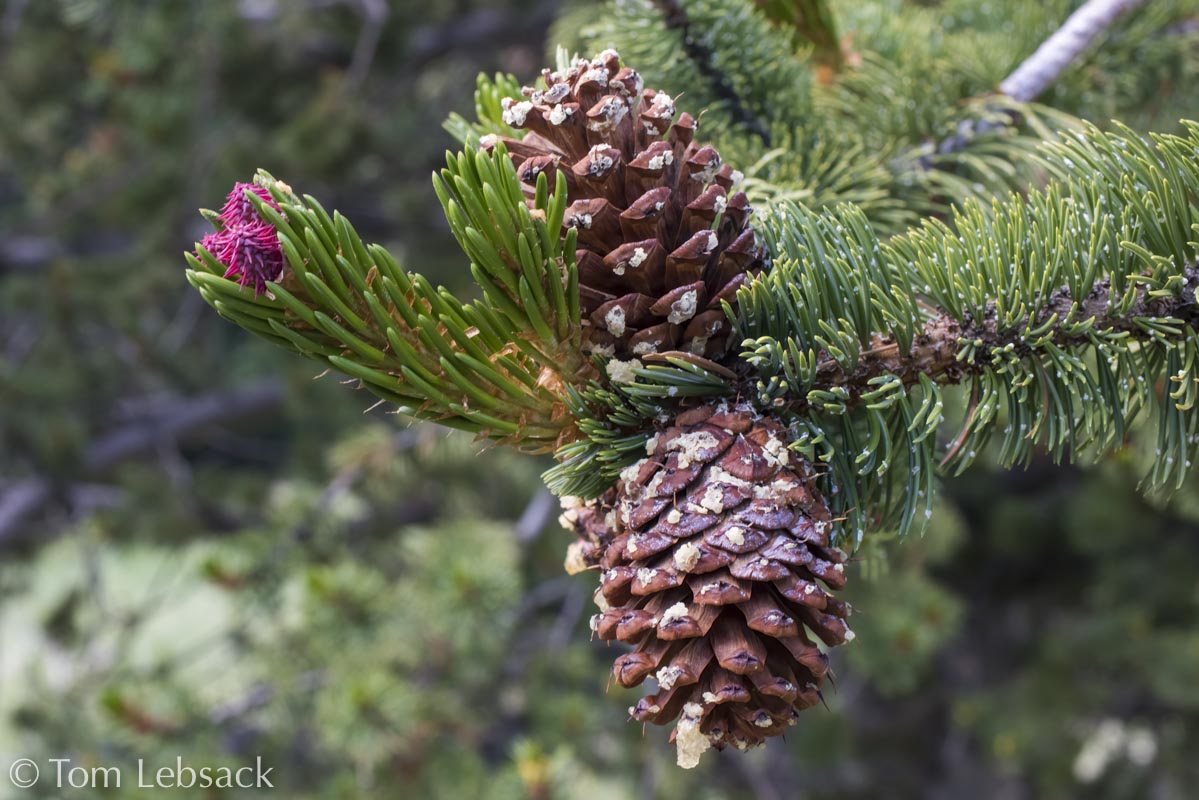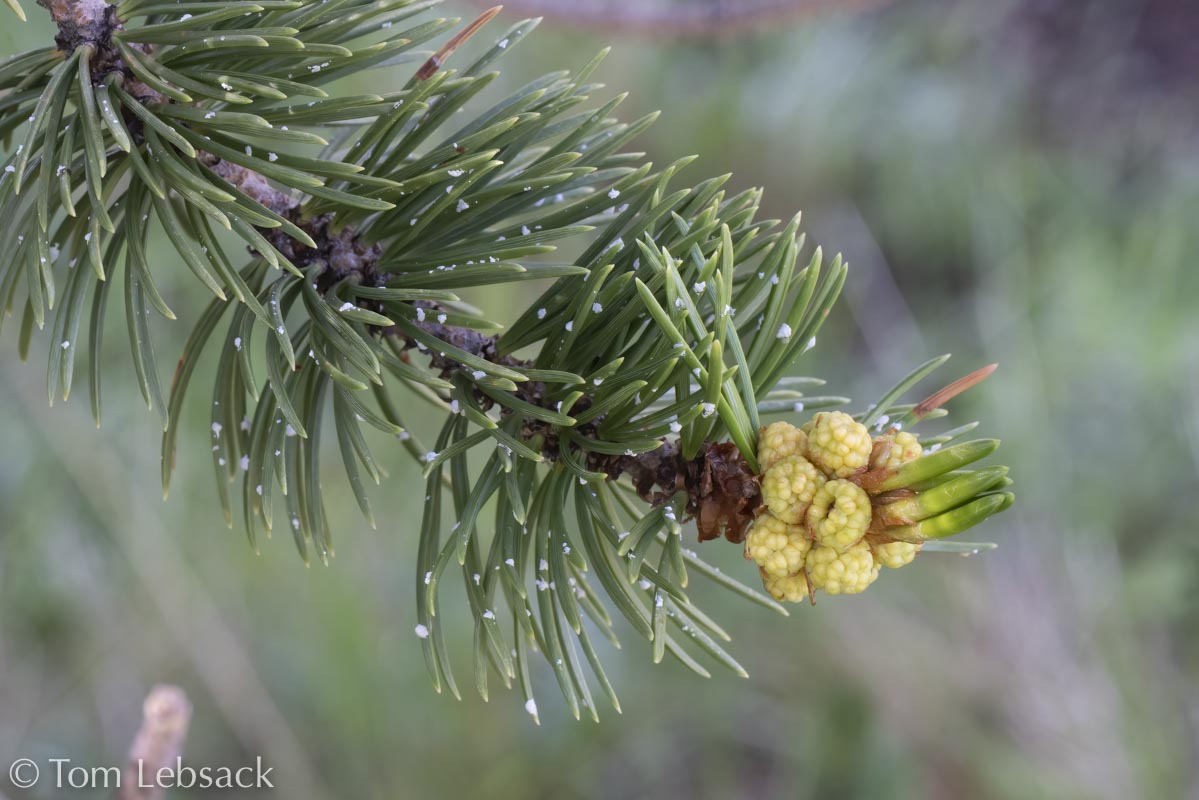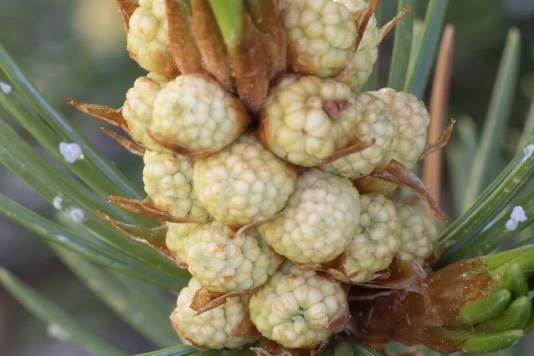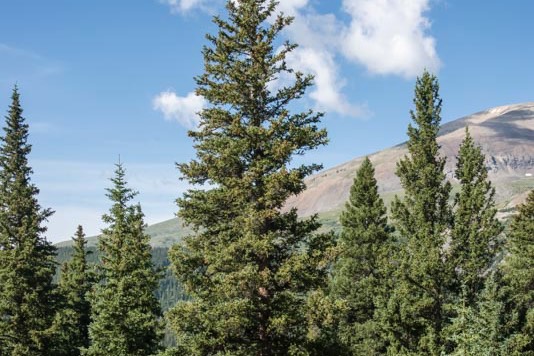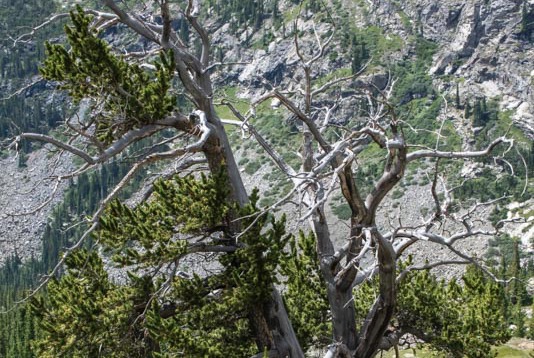Pinus aristata
(Bristlecone Pine)
| Scientific Name | Pinus aristata | USDA PLANTS Symbol | PIAR |
| Common Name | Bristlecone Pine | ITIS Taxonomic Serial No. | 183313 |
| Family | Pinaceae (Pine) | SEINet Reference |
Click Here |
| Description |
Life zones and habitat: Foothills to alpine (8300 to 13000 ft.); generally poor, rocky, gravelly soils in open areas on south and west-facing slopes. Plant: Very long-lived evergreen conifer that in favorable conditions will grow to 50 ft. tall with trunk up to 40 inches in diameter; trunk usually single, but multiple trunks may occur; crown is rounded, flattened or irregular, especially in older trees; bark is gray to red-brown, with long, flat, irregular ridges; branches are contorted; twigs are pale red-brown, aging gray and resembling long bottlebrushes because of needles; buds are pale red-brown, ovoid, pointed, about 0.4 inches across and resinous. Trees size is dependent upon elevation, growing as a small tree at upper subalpine elevations and forming krummholz at treeline. At higher elevations in CO the trees can grow to be very old, 1600 to 2500 years. Needles: Five per fascicle, 0.8 to 1.6 inches long; upcurved, stiff, dark green to deep blue-green, flecked with drops and scales of resin; inner surface with a white line; outer surface usually has a narrow median groove. Cones: Male and female cones on same tree; male cones are ellipsoid, up to 0.4 inches long, bluish to red or orange-red; female cones are cylindric, 2.4 to 4.3 inches long, purplish-brown, scales tipped with a slender, curved prickle up to 0.4-inch long. References: "Flora of Colorado" by Jennifer Ackerfield, Fire Effects Information System, Flora of North America and SEINet. |
BONAP Distribution Map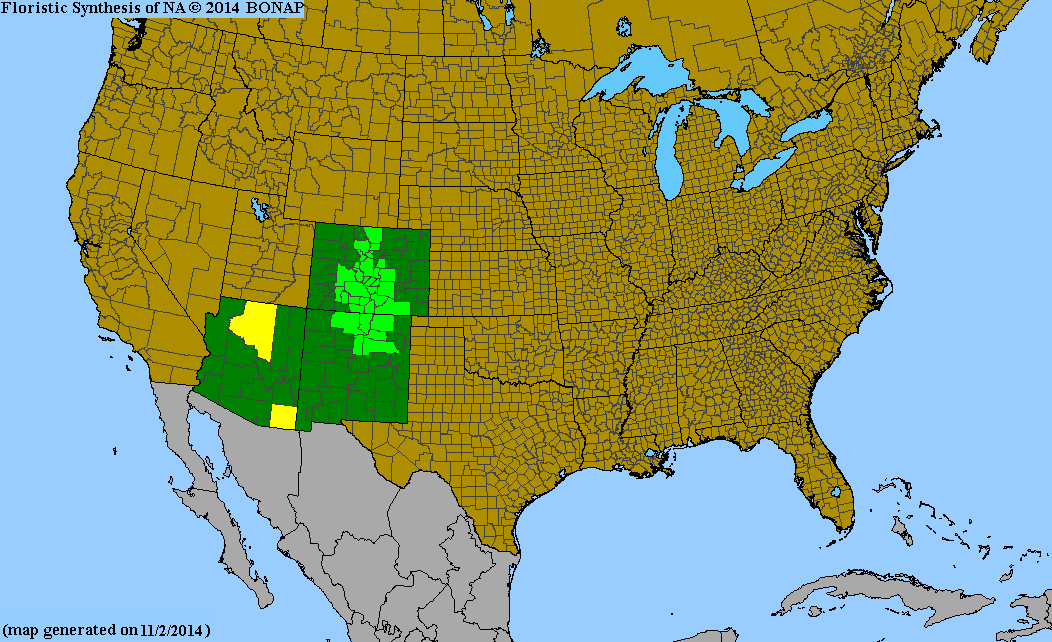
Map Color Key |
Colorado Status: Native |
© Tom Lebsack 2025
Banner photo: Castilleja rhexifolia and a brewing storm over the San Juan Mountains
I try to provide accurate, up-to-date, and relevant information, but cannot guarantee the completeness or accuracy of any information presented on this website. I use authoritative references to insure high standards of accuracy and review and update the information frequently.
